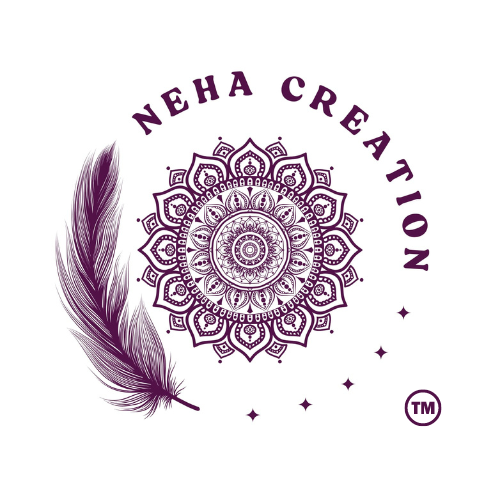Mandala art is more than just beautiful patterns—it is a reflection of mindfulness, culture, and creative expression. From the first stroke to the final design, every detail in mandala art holds meaning. The complexity and symmetry captivate both artists and observers alike, drawing them into a deeper state of awareness and inspiration.
In this article, we explore the rich intricacy of mandala drawings, the significance of every stroke, and how mandala art can be a powerful tool for mindfulness, self-expression, and healing.
What is Mandala Art?
The term mandala comes from Sanskrit, meaning “circle.” Mandalas are geometric designs that represent unity, balance, and the cosmos. Traditionally used in spiritual practices in Buddhism and Hinduism, modern mandala art has evolved into a universal form of artistic meditation and personal development.
With its repetitive, symmetrical patterns and detailed lines, mandala art design invites focus and reflection, offering an immersive experience for both creator and viewer.
The Beauty Lies in the Details
What sets mandala art apart is its intricate detail. Each line, dot, curve, and shape is purposefully placed, contributing to the harmony of the overall pattern. These small, meticulous elements not only enhance visual appeal but also encourage mindful engagement.

Why Every Stroke Matters:
-
Precision builds pattern – Each stroke contributes to the perfect symmetry that defines a mandala.
-
Symbolism in shapes – Circles, petals, triangles, and dots symbolize unity, growth, and the cycle of life.
-
Color psychology – Colors are selected intentionally to evoke emotional and spiritual responses.
-
Personal energy – The hand-drawn details carry the creator's emotions, intentions, and energies.
Discovering the Layers of Meaning in Mandala Patterns
A mandala isn’t just art—it’s a layered experience of meaning. From the inside out, each layer represents a different aspect of life, the self, and the universe. As you move outward from the center of a mandala, you explore deeper truths and broader perspectives.
Common Mandala Elements and Their Meaning:
-
The Center Dot – Represents the starting point, the origin of everything.
-
Circles – Symbolize wholeness, timelessness, and unity.
-
Lotus Petals – Reflect purity, enlightenment, and transformation.
-
Spirals and Arcs – Indicate motion, growth, and evolution.
Exploring these intricate forms invites self-awareness and inner peace—a core purpose of mandala art.
Benefits of Creating and Observing Mandala Art
Whether you’re a seasoned artist or a beginner, engaging with mandala art offers multiple benefits—mental, emotional, and spiritual. The detailed strokes serve more than an aesthetic purpose; they’re a form of active meditation.
1. Promotes Mindfulness
The repetitive drawing of detailed patterns requires full attention, helping you stay present and connected to the moment.
2. Boosts Creativity
Mandala design allows for endless artistic choices—patterns, colors, shapes, and themes—all while maintaining a structured base.
3. Enhances Emotional Healing
As you explore and create each layer, you may uncover and release hidden emotions. The act of drawing itself is soothing and therapeutic.
4. Improves Focus and Patience
Drawing intricate mandalas cultivates patience and builds concentration. It’s an exercise in slowing down and appreciating each detail.
Mandala Art in Daily Life
Incorporating mandala designs into your daily life can help ground your energy, spark inspiration, and bring more beauty into your environment.
Ideas for Bringing Mandala Art into Everyday Life:
-
Coloring Books for Stress Relief – Use adult mandala coloring books to relax and unwind.
-
Wall Art for Peaceful Spaces – Decorate your home or office with hand-drawn or printed mandala wall art to invite calm energy.
-
Journaling and Mood Tracking – Add mandala sketches to your bullet journal or emotion tracker for self-reflection.
-
Spiritual Practices – Use mandalas as a tool in meditation or yoga for deeper focus and intention-setting.
How to Start Exploring Mandala Art
Ready to dive into the world of intricate mandala designs? Here are a few beginner-friendly ways to start:
1. Try Mandala Coloring Pages
Download printable mandala designs and explore different color palettes. This is a great way to appreciate fine details without the pressure of drawing.
2. Use Drawing Guides
Use tools like compasses and protractors to create symmetrical base circles. From there, experiment with shapes and patterns.
3. Take a Mandala Art Course
Online platforms and artists offer step-by-step mandala art classes. These guided sessions help you understand the techniques behind detailed mandala creation.
4. Join a Mandala Community
Whether online or in-person, joining other mandala artists can provide inspiration, feedback, and shared enthusiasm for this mindful art form.
Final Thoughts
Discovering the intricate details in every stroke of mandala art is a journey of presence, patience, and personal expression. From the smallest dot to the largest circle, every part of a mandala tells a story—your story. The detailed nature of this art form is what makes it not only visually stunning but also spiritually and emotionally fulfilling.
Whether you’re creating, coloring, or simply admiring, mandala art has the power to transform how you see patterns—both in art and in life. Let each stroke guide you toward clarity, peace, and deeper connection.


